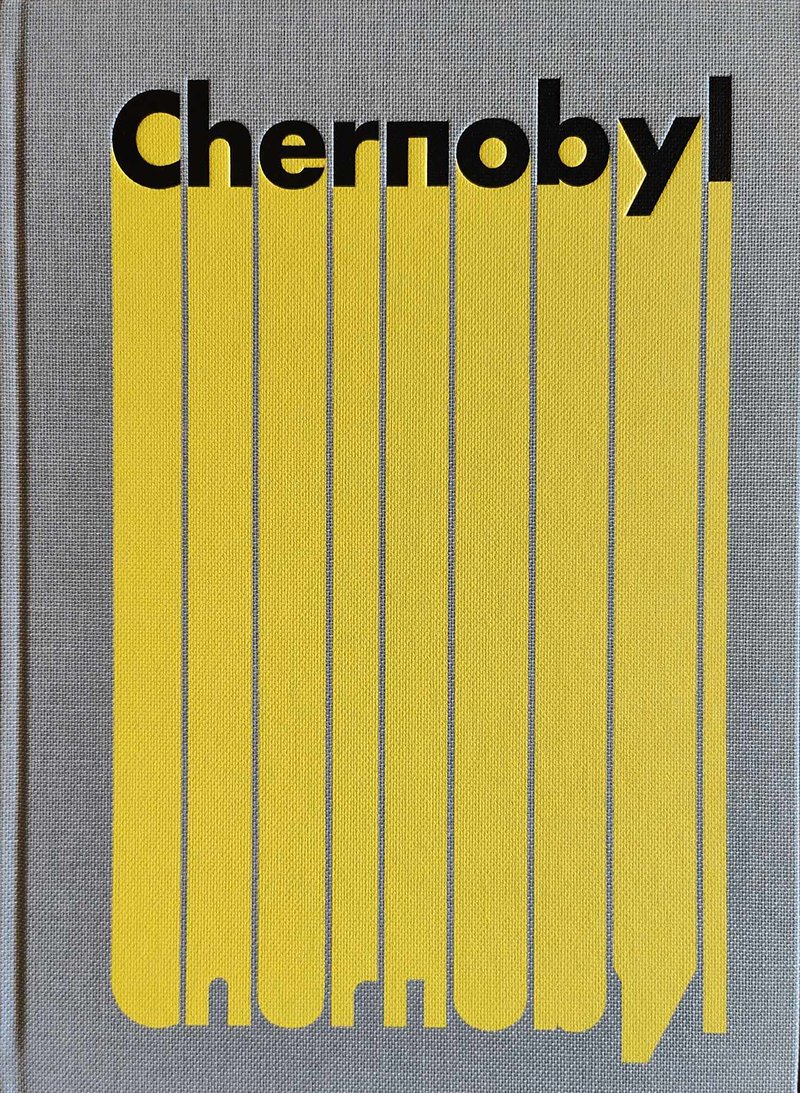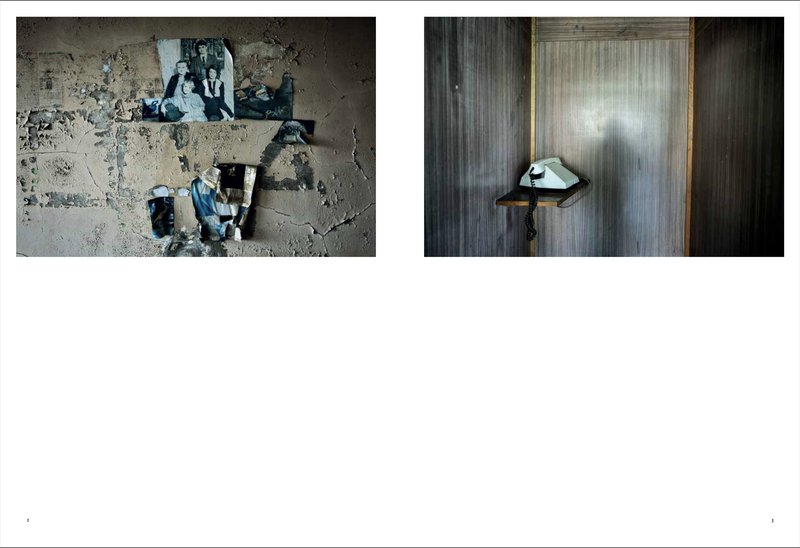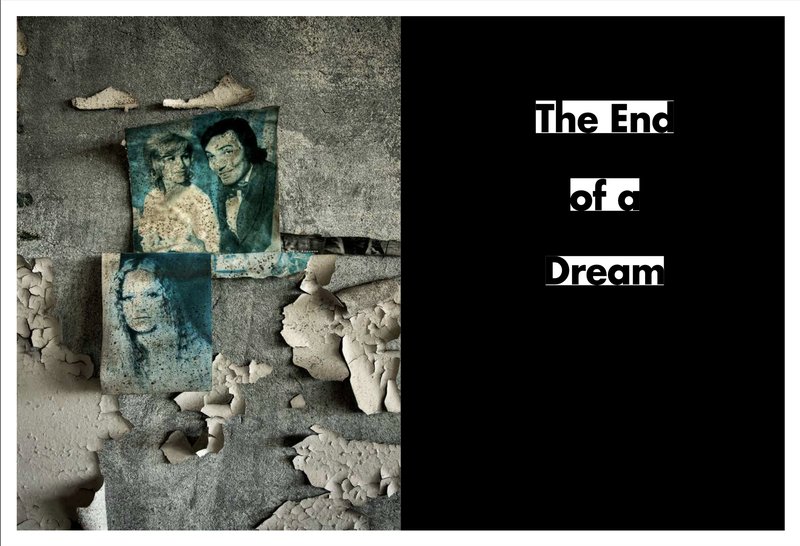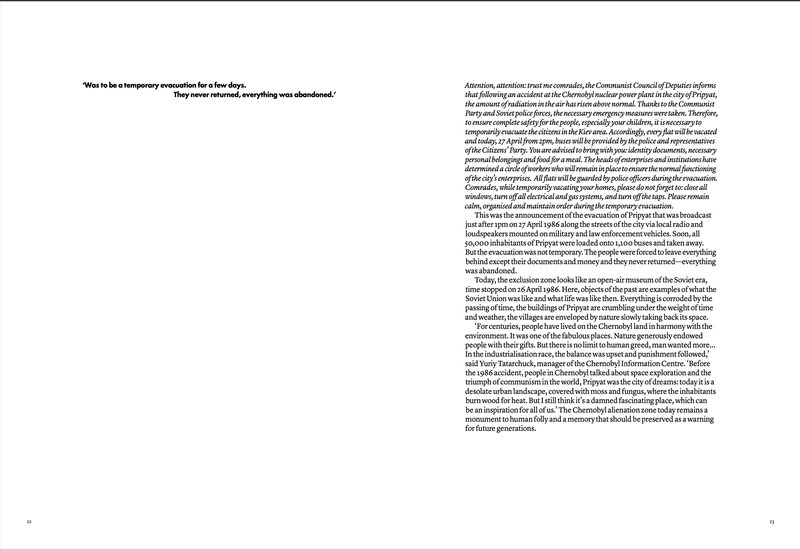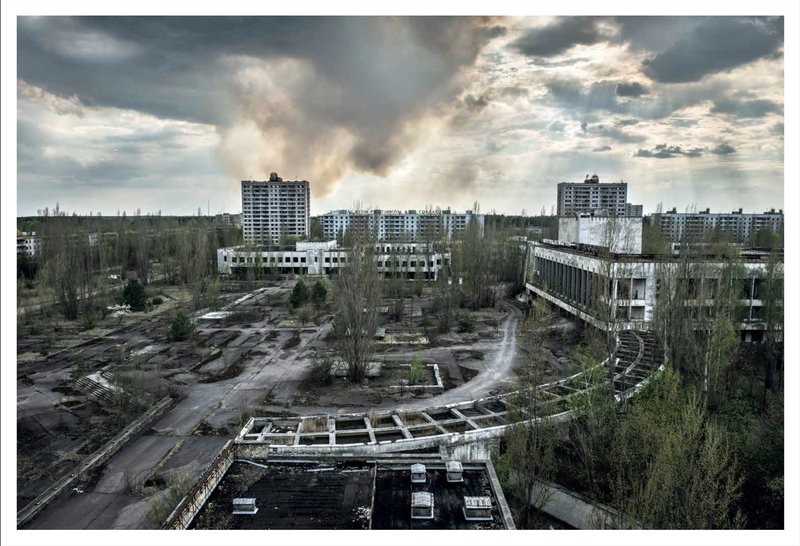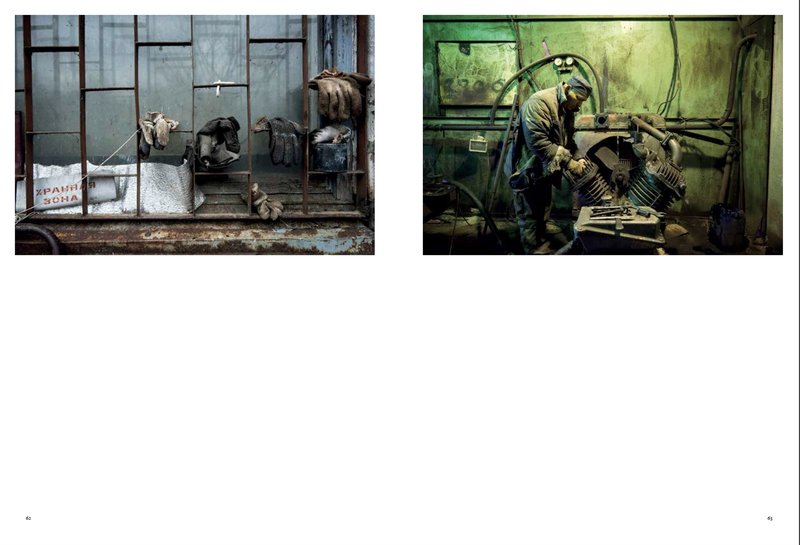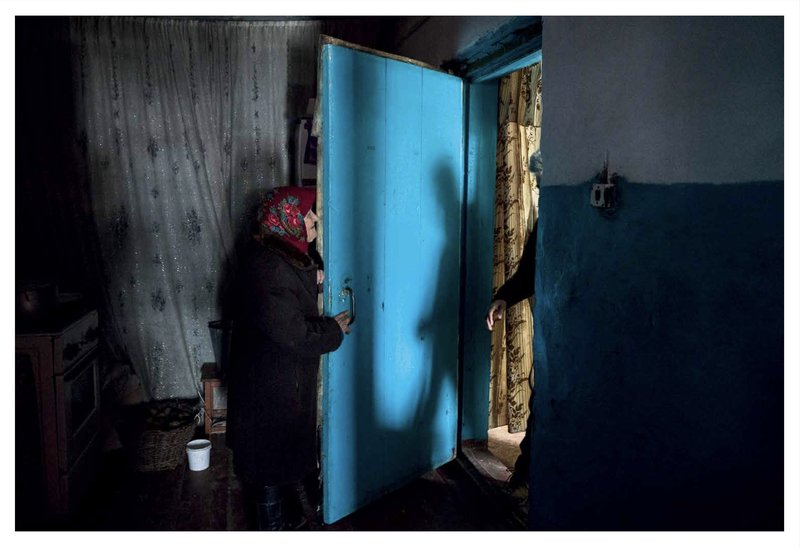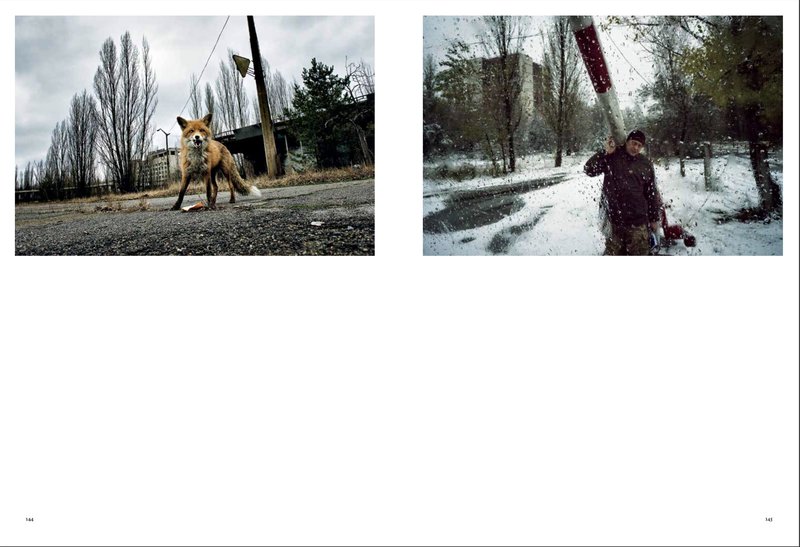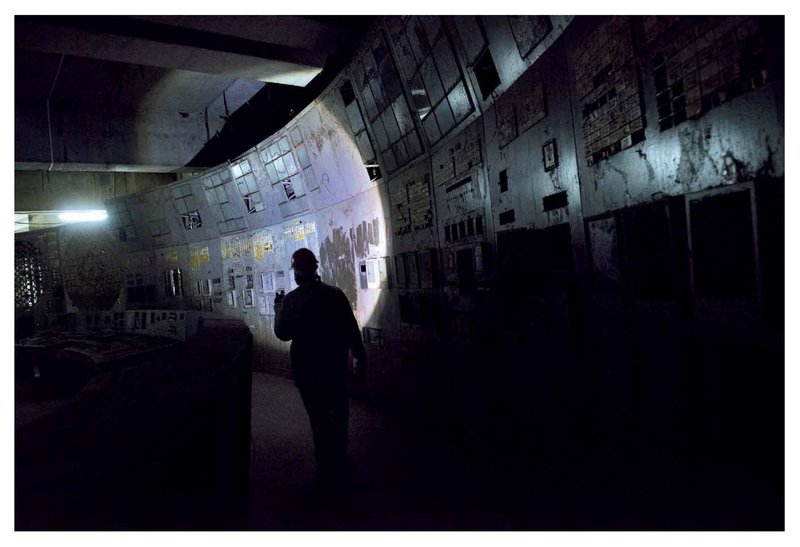Award of Excellence: Chernobyl
Caption
Slide 9 of 10
Chernobyl
May 2, 2024
pages 120-121 The Chernobyl nuclear power plant, officially the Vladimir Lenin Nuclear Power Plant, is located in Ukraine near the ghost town of Pripyat, sixteen kilometres northwest of the city of Chernobyl, sixteen kilometres from the Belarus–Ukraine border, and about 100 kilometres north of Kyiv. The power plant was commissioned in phases starting in 1970 with the four reactors entering commercial operation between 1978 and 1984. The reactor that exploded at Chernobyl was a reactor of the RBMK type of 1000 MW, one of the most common in the former Soviet Union, but had thirty defects—the cause of the explosion—together with the fact that the plant operators were unaware of the defects. The explosion of the reactor at Chernobyl spewed into the air contamination 200 times greater than the atomic bomb at Hiroshima. The firemen that put out the fire in reactor 4, along with the 600,000 ‘liquidators’ who constructed the sarcophagus and took part in operations to seal the reactor, were rightly called heroes. Thanks to their sacrifice they saved the world from a catastrophe that could have been far worse than Chernobyl was. Today it is estimated that only sixty thousand of those liquidators are still alive. These men, to whom Europe and the rest of the world owe their lives, have been buried and forgotten. After thirty years the crumbling sarcophagus was locked up and secured.
Pierpaolo Mittica
